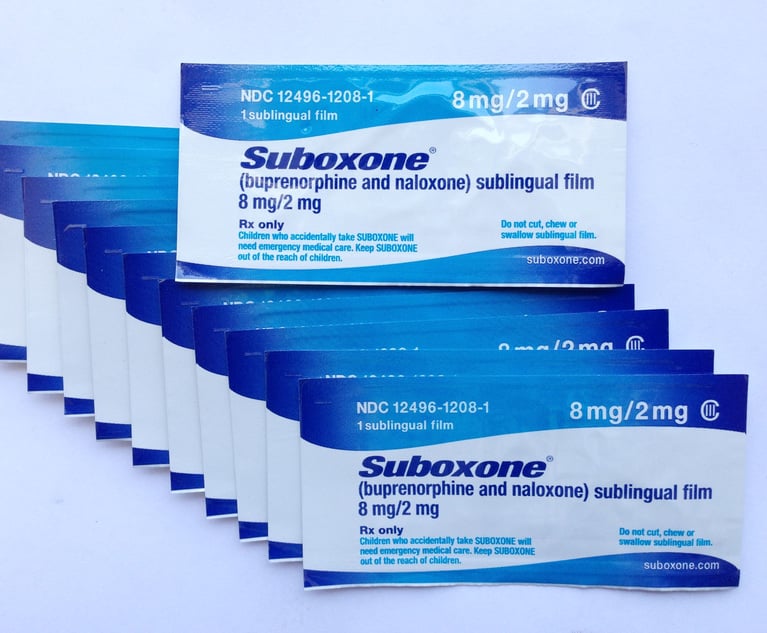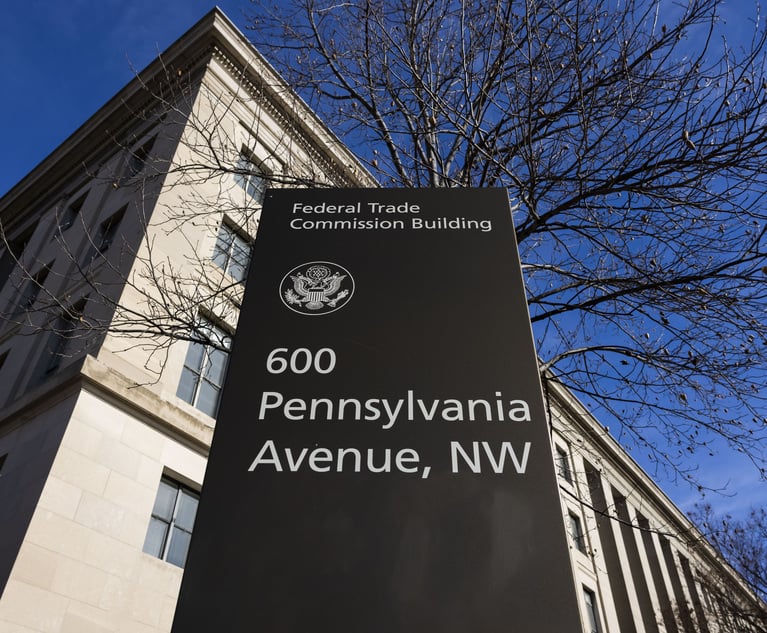Second Circuit Revives 'Flash Boys' Market Manipulation Suit Against Exchanges
The appellate panel said the district court erred in granting the exchanges absolute immunity, as well as in finding the plaintiffs failed to state a claim.
December 19, 2017 at 07:47 PM
5 minute read

A class of institutional investors saw their suit against the New York Stock Exchange, NASDAQ and other major exchanges revived by the U.S. Court of Appeals for the Second Circuit Tuesday, over the alleged creation of a two-tier trading system in favor of so-called “flash boys” high frequency traders.
The class plaintiffs, led by the city of Providence, Rhode Island, and other investors, brought the suit against the security exchanges over what they claimed were the creation of special products that allowed high frequency trading firms a leg up on the rest of the market.
The class suit, brought under the anti-market manipulation and deceptive conduct statutes, claimed the exchanges' creation of proprietary data feed products, trading server co-location services, and special complex trading order opportunities that were targeted and sold to high frequency traders knowingly gave them an unfair competitive advantage.
In August 2015, U.S. District Judge Jesse Furman of the Southern District of New York ruled in favor of the defendant exchanges. He determined they were correct in arguing that they retained, as quasi-regulatory bodies, absolute immunity against the action, as well as finding the plaintiffs failed to state a claim.
The panel of U.S. Circuit Judges John Walker Jr., José Cabranes and Raymond Lohier Jr. disagreed.
The panel first tackled the issue of the court's subject matter jurisdiction. Furman ruled that the district court retained jurisdiction, and the panel agreed. While defendant exchanges argued that the U.S. Securities and Exchange Commission's regulatory purview controlled in this instance, the court found the allegations in the suit, being a private cause of action for fraud, provided the court the ability to review.
However, the panel found the district court erred in conceding absolute immunity to the security exchanges. In this instance, the panel noted, the exchanges ceased to be a stand-in for the SEC's role over the market—acting in a regulatory role. In that framing, a whole host of actions by the exchanges, usually over the actions of exchange members, were able to avoid being litigated.
In this instance, though, the specific acts under review—the co‐location services and the proprietary data feeds—weren't part of the exchanges' regulatory powers. Instead, the exchanges were engaging in conduct with the market, rather than oversight of it. In doing so, they went from regulators to the regulated, and lost their claim to immunity, the panel found.
Likewise, the panel reversed course on the district court's failure to state a claim ruling. Furman specifically said plaintiffs failed to sufficiently allege manipulated market activity by the exchanges, nor that they committed a “primary”—rather than simply aiding and abetting—Securities Act violations.
The panel disagreed, siding with the plaintiffs, who argued that the products themselves sold to the high frequency traders helped them manipulate the market, while the exchanges failed to notify the rest of the market to the potential effect.
The panel pointed to the example of one of the complex order product offered to the traders that allowed them to place orders that remained hidden from the market until the stock reached a certain price, at which point the order would jump to the top of the trade queue. The panel went on to dismiss defendants' claims that actual trading activity was required to sufficiently make a claim, noting in numerous case law that it was “market activity” that was required.
On the issue of primary manipulation requirements, the panel went back to its earlier point that the exchanges selling these products to the market changed their relationship to the market. They became co-participants with the firms in the alleged manipulative scheme, for the purposes of sufficiency's sake.
“The exchanges sold products and services during the class period that favored HFT firms and, in return, the exchanges received hundreds of millions of dollars in payments for those products and services and in fees generated by the HFT firms' substantially increased trading volume on their exchanges,” the panel wrote.
Robbins Geller Rudman & Dowd partner Joseph Daley led the firm's appellate efforts on behalf of the plaintiff investors. In a statement, firm name attorney Darren Robbins said the firm and its clients were pleased with the decision, specifically noting the panel's reversal on absolute immunity.
“As the court recognized, lead plaintiffs have sufficiently pled that the exchanges created a fraudulent scheme that benefited high frequency trading firms and the exchanges and failed to adequately disclose that scheme to investors,” Robbins said. “We look forward to presenting the case to a jury, showing that implementing discriminatory trading mechanisms is fraudulent and manipulative conduct [that] violates the federal securities laws.”
Gibson, Dunn & Crutcher partner Douglas Cox led the exchanges' legal team. He could not be reached for comment.
This content has been archived. It is available through our partners, LexisNexis® and Bloomberg Law.
To view this content, please continue to their sites.
Not a Lexis Subscriber?
Subscribe Now
Not a Bloomberg Law Subscriber?
Subscribe Now
NOT FOR REPRINT
© 2025 ALM Global, LLC, All Rights Reserved. Request academic re-use from www.copyright.com. All other uses, submit a request to [email protected]. For more information visit Asset & Logo Licensing.
You Might Like
View All

Judge Denies Retrial Bid by Ex-U.S. Sen. Menendez Over Evidentiary Error

What Businesses Need to Know About Anticipated FTC Leadership Changes
7 minute readTrending Stories
- 1Gibbons Reps Asylum Seekers in $6M Suit Over 2018 ‘Inhumane’ Immigration Policy
- 2DC Judge Chutkan Allows Jenner's $8M Unpaid Legal Fees Lawsuit to Proceed Against Sierra Leone
- 3Internal Whistleblowing Surged Globally in 2024, so Why Were US Numbers Flat?
- 4In Resolved Lawsuit, Jim Walden Alleged 'Retaliatory' Silencing by X of His Personal Social Media Account
- 5Government Attorneys Face Reassignment, Rescinded Job Offers in First Days of Trump Administration
Who Got The Work
J. Brugh Lower of Gibbons has entered an appearance for industrial equipment supplier Devco Corporation in a pending trademark infringement lawsuit. The suit, accusing the defendant of selling knock-off Graco products, was filed Dec. 18 in New Jersey District Court by Rivkin Radler on behalf of Graco Inc. and Graco Minnesota. The case, assigned to U.S. District Judge Zahid N. Quraishi, is 3:24-cv-11294, Graco Inc. et al v. Devco Corporation.
Who Got The Work
Rebecca Maller-Stein and Kent A. Yalowitz of Arnold & Porter Kaye Scholer have entered their appearances for Hanaco Venture Capital and its executives, Lior Prosor and David Frankel, in a pending securities lawsuit. The action, filed on Dec. 24 in New York Southern District Court by Zell, Aron & Co. on behalf of Goldeneye Advisors, accuses the defendants of negligently and fraudulently managing the plaintiff's $1 million investment. The case, assigned to U.S. District Judge Vernon S. Broderick, is 1:24-cv-09918, Goldeneye Advisors, LLC v. Hanaco Venture Capital, Ltd. et al.
Who Got The Work
Attorneys from A&O Shearman has stepped in as defense counsel for Toronto-Dominion Bank and other defendants in a pending securities class action. The suit, filed Dec. 11 in New York Southern District Court by Bleichmar Fonti & Auld, accuses the defendants of concealing the bank's 'pervasive' deficiencies in regards to its compliance with the Bank Secrecy Act and the quality of its anti-money laundering controls. The case, assigned to U.S. District Judge Arun Subramanian, is 1:24-cv-09445, Gonzalez v. The Toronto-Dominion Bank et al.
Who Got The Work
Crown Castle International, a Pennsylvania company providing shared communications infrastructure, has turned to Luke D. Wolf of Gordon Rees Scully Mansukhani to fend off a pending breach-of-contract lawsuit. The court action, filed Nov. 25 in Michigan Eastern District Court by Hooper Hathaway PC on behalf of The Town Residences LLC, accuses Crown Castle of failing to transfer approximately $30,000 in utility payments from T-Mobile in breach of a roof-top lease and assignment agreement. The case, assigned to U.S. District Judge Susan K. Declercq, is 2:24-cv-13131, The Town Residences LLC v. T-Mobile US, Inc. et al.
Who Got The Work
Wilfred P. Coronato and Daniel M. Schwartz of McCarter & English have stepped in as defense counsel to Electrolux Home Products Inc. in a pending product liability lawsuit. The court action, filed Nov. 26 in New York Eastern District Court by Poulos Lopiccolo PC and Nagel Rice LLP on behalf of David Stern, alleges that the defendant's refrigerators’ drawers and shelving repeatedly break and fall apart within months after purchase. The case, assigned to U.S. District Judge Joan M. Azrack, is 2:24-cv-08204, Stern v. Electrolux Home Products, Inc.
Featured Firms
Law Offices of Gary Martin Hays & Associates, P.C.
(470) 294-1674
Law Offices of Mark E. Salomone
(857) 444-6468
Smith & Hassler
(713) 739-1250







